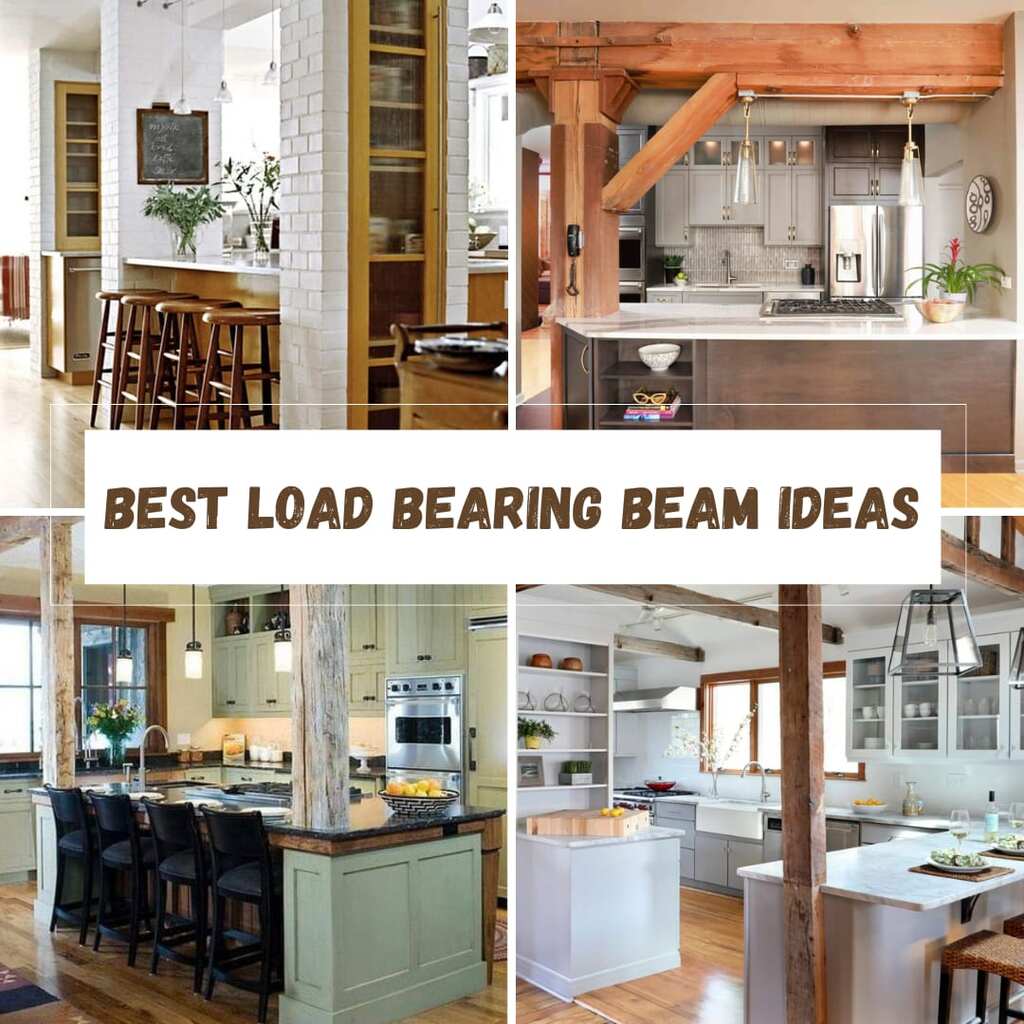In this blog, I’ll tell you about the best and most creative load-bearing beam ideas to bring functionality and style into your home.
Have you noticed that your load-bearing beams are standing out for all the wrong reasons? Whether you’re remodeling a room or just looking for ways to blend beauty with utility, this blog is your go-to guide for clever load-bearing beam ideas that not only solve your structural needs but also add a touch of design flair.
Ready to transform your beams from bland to grand? Let’s dive in!
Best Design Ideas For Load Bearing Beams
When I first started tackling my kitchen renovation, the load-bearing beams above the space seemed like an obstacle. After experimenting with several options, I’ve discovered a few design ideas that not only work wonders but also elevate the entire vibe:
1. Exposed Wooden Beam Architecture
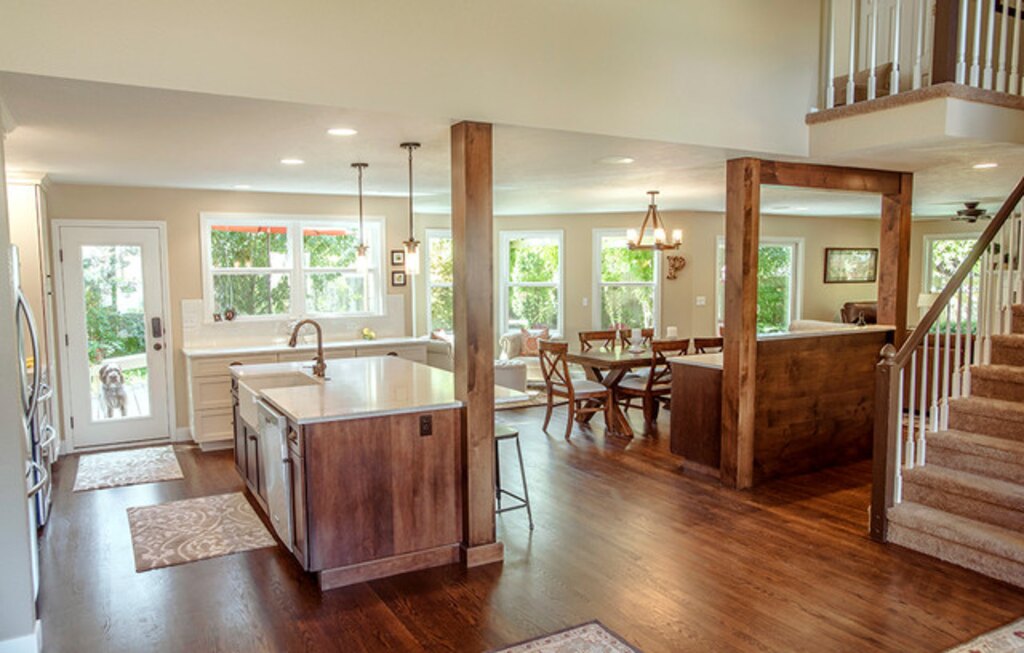
Exposing your load-bearing beams in natural wood can add rustic charm and texture that no other material quite matches. The beauty of exposed wooden beams is that they instantly give a room a sense of warmth and character.
When I incorporated reclaimed wood into my kitchen, I loved how the imperfections in the wood—like knots and slight color variations—became focal points, giving the space an authentic, handcrafted feel.
This design works especially well in kitchens with open layouts, as it draws the eye upward and creates an organic connection between the ceiling and the rest of the space. It also pairs well with farmhouse, rustic, or cottage-inspired décor. However, it’s important to treat the wood properly for moisture resistance, as kitchens are prone to humidity.
2. Shiplap-Wrapped Beam Pillar
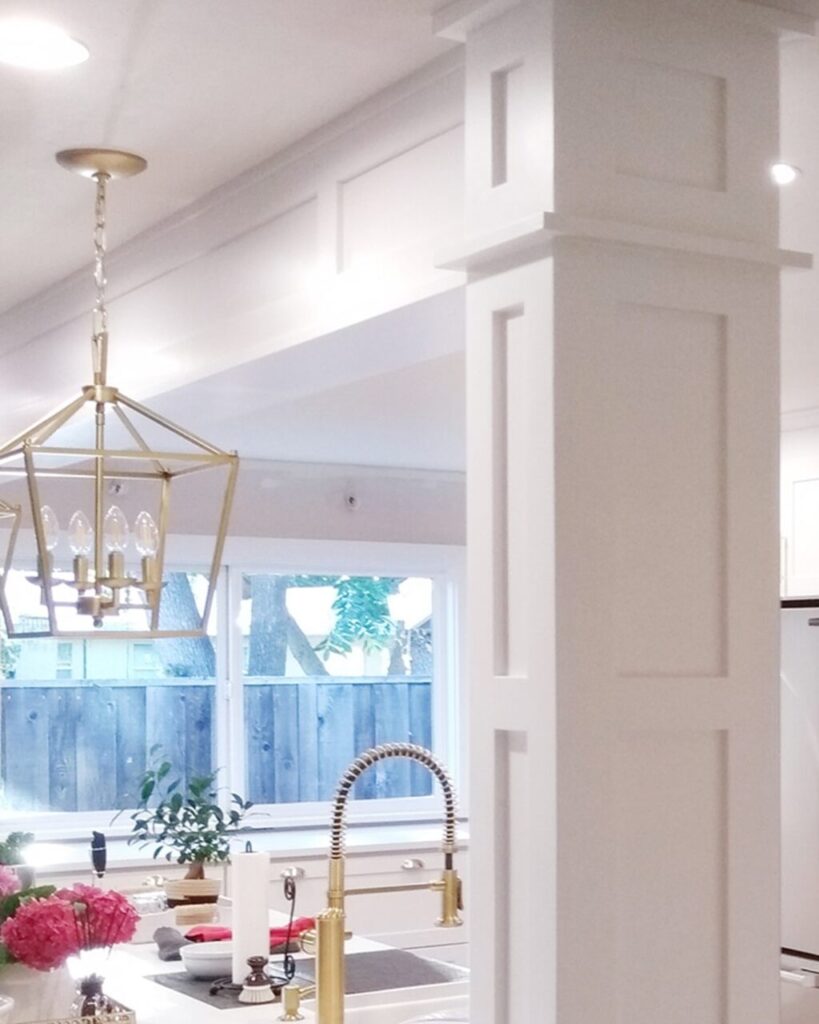
If you’re after a coastal or rustic farmhouse vibe, wrapping your load-bearing beams in shiplap is a fantastic way to add texture and personality.
Shiplap boards, with their distinctive groove edges, can soften the appearance of the beams and give them a more charming, approachable look.
When I used shiplap to wrap my beams, I loved how it made the entire kitchen feel more open and airy, especially with whitewashed wood.
The shiplap also works wonders to enhance the sense of vertical space, giving your kitchen that cozy cottage feel. It’s a great option for smaller kitchens or spaces where you want to emphasize natural light and an inviting atmosphere.
3. Beams with Crown Molding
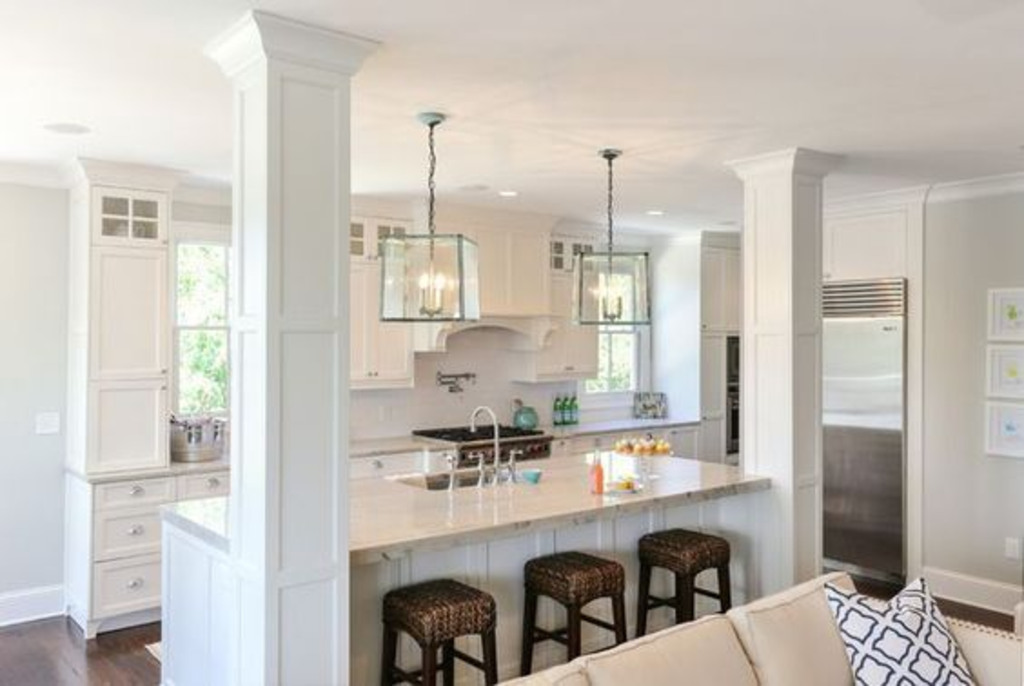
If you want to give your kitchen a more polished, elegant look, adding crown molding to your load-bearing beams can make a world of difference.
I decided to go this route in my kitchen remodel and was amazed at how much it elevated the space. The crown molding adds a sense of grandeur and luxury, and it’s particularly effective in high-ceilinged kitchens where the beams might otherwise feel too imposing.
The molding helps to break up the sharp lines of the beam, softening its edges and creating a more refined, classic aesthetic.
It’s a design trick that’s particularly well-suited to traditional, transitional, or even contemporary kitchens that lean toward elegance.
4. Beam with Floating Shelves
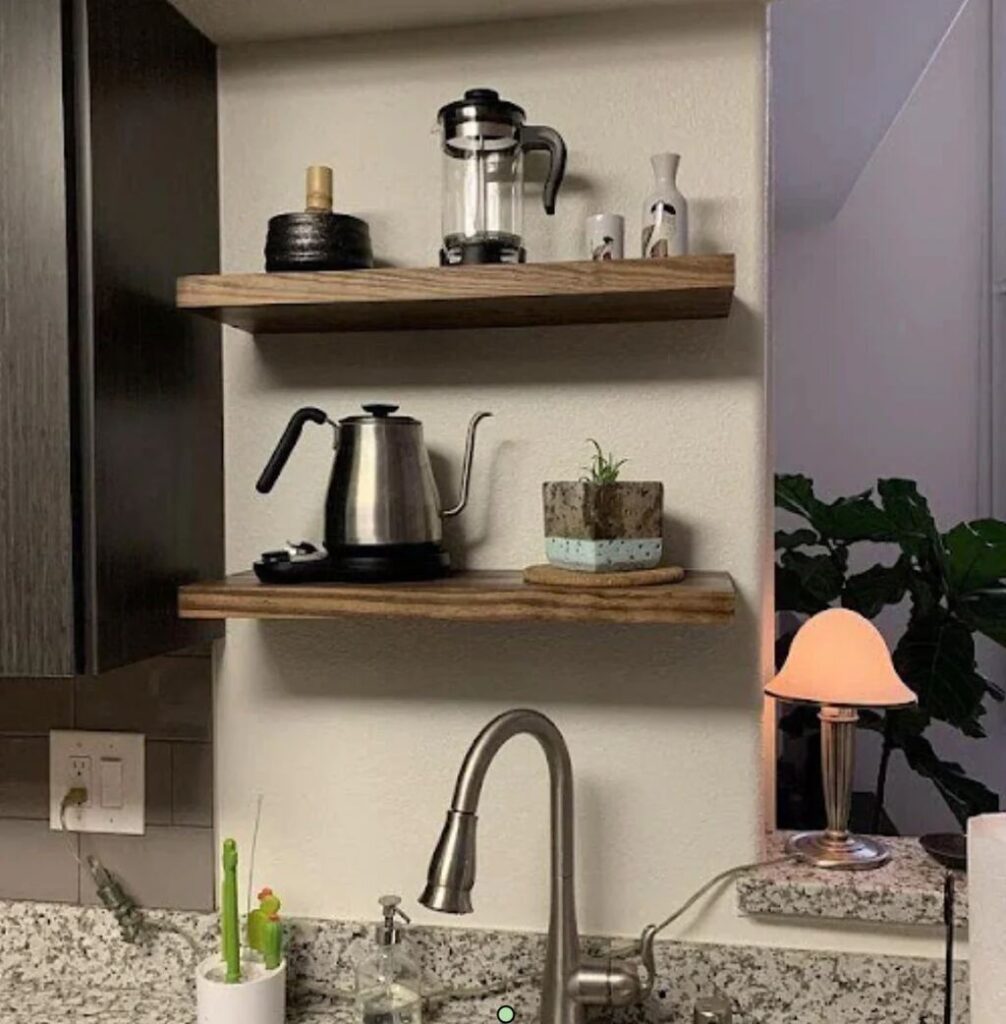
For a clean, contemporary look, minimalist load-bearing beams paired with floating shelves are a winning combination.
The floating shelves eliminate the bulkiness of traditional cabinetry, and when integrated with slim, unobtrusive beams, they create an open, airy feeling.
I love how this setup made my kitchen feel less cramped while still offering plenty of storage for dishes, spices, or decor.
The minimalist beams don’t compete with the shelves but instead, act as functional yet unobtrusive design elements that blend seamlessly into the room.
This design works especially well in modern kitchens where less is more, and every piece serves a purpose.
5. Beam Pillar with Mirrors
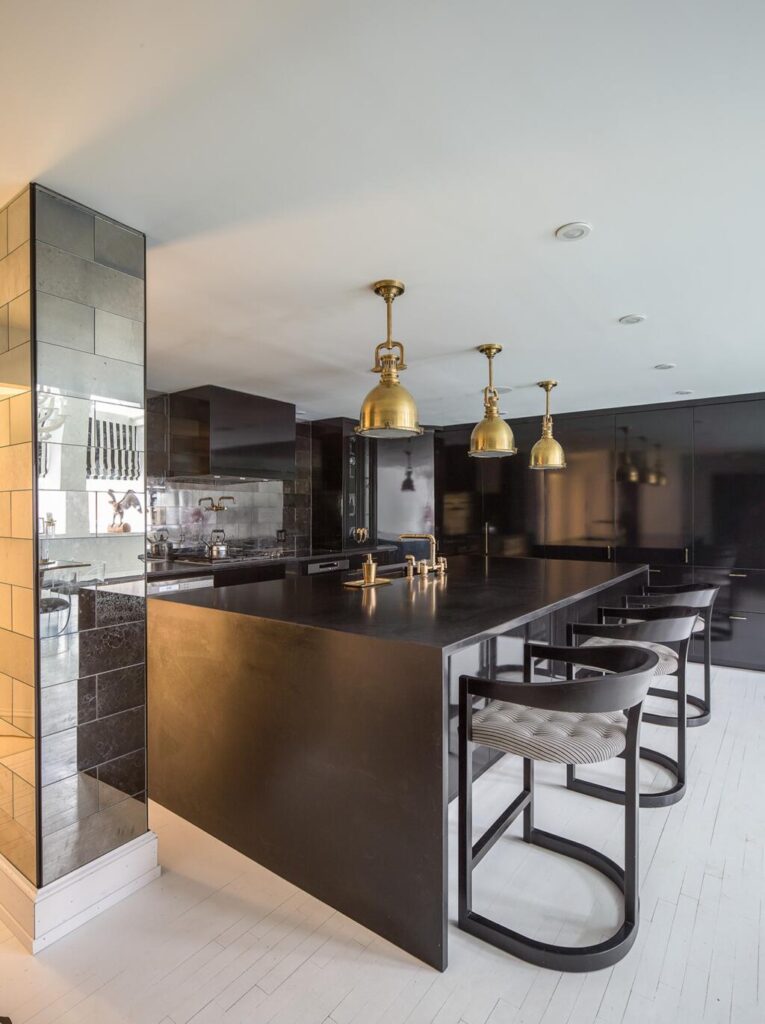
A mirror beam involves cladding a structural or decorative beam with mirrors to reflect light and create an illusion of space.
It’s especially effective in rooms with low ceilings or compact layouts because it tricks the eye into perceiving more height and depth.
When I incorporated a mirror beam in my living space, it completely transformed the room. The natural light bouncing off the mirrored surface made the space feel airy and expansive, and it became an unexpected focal point.
If you’re dealing with a darker room or trying to make a tight area feel less confined, this idea is a winner.
6. Beam Pillar with Built-In Storage
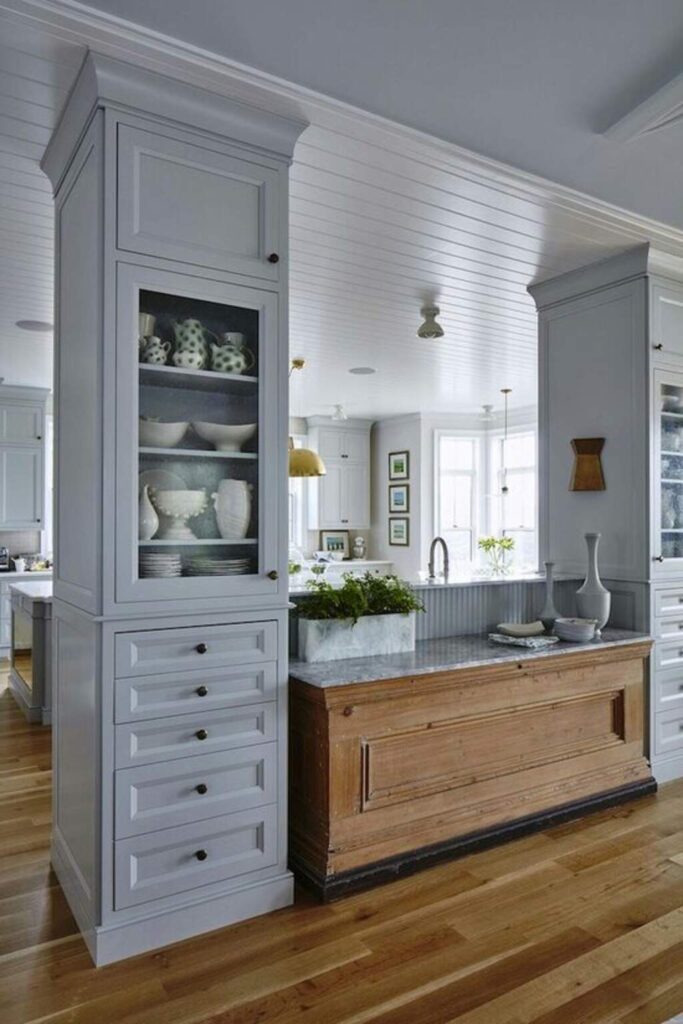
Combining a load-bearing beam with built-in storage is a brilliant way to maximize your kitchen’s functionality while keeping the design sleek and clean.
I added hidden storage into the beams above my kitchen counters, which gave me a place to store cookbooks, small appliances, and other essentials. The result was a clutter-free, organized space that still had plenty of room for movement.
This is especially great for small kitchens where every inch counts, and it can also help you hide away things you don’t use daily without compromising the beam’s load-bearing role.
Plus, the sleek storage compartments can be finished to match your cabinetry, giving the whole kitchen a unified look.
7. Add Plants
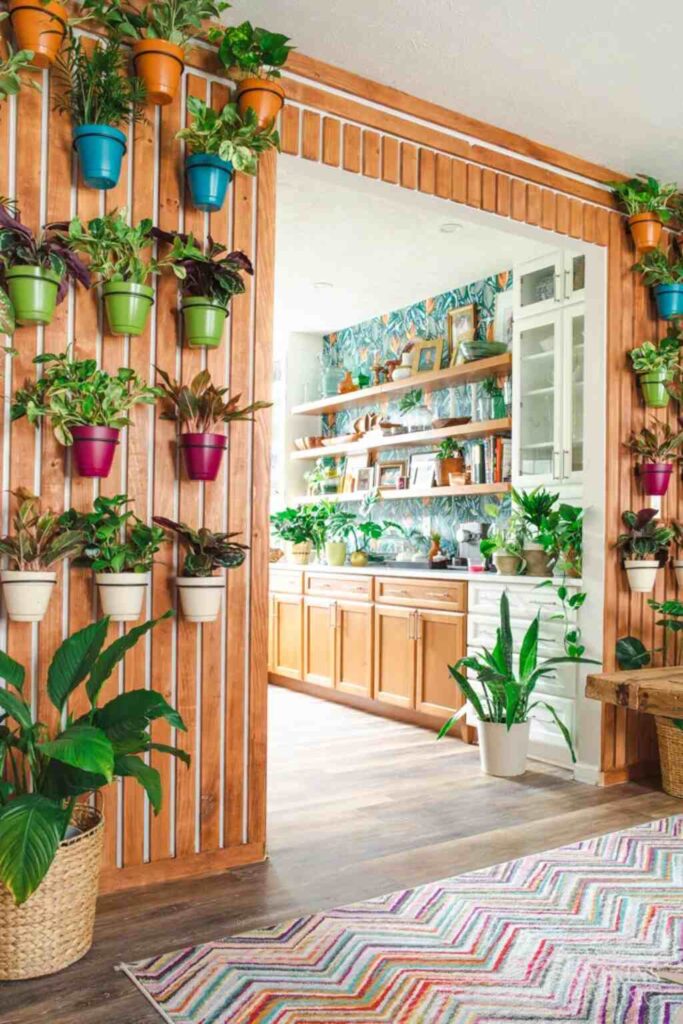
Why not make your beam work double duty? By incorporating built-in planter boxes, your load-bearing beam becomes a green oasis within your kitchen.
Imagine vibrant herbs, cascading ivy, or colorful flowers hanging off the sides of your beam. I’ve tried this in a few kitchens, and it always brings an organic, fresh vibe to the space.
You get the structural support of the beam while adding a touch of nature to your kitchen. It’s perfect for those who love a bit of greenery but may not have space for an entire garden.
8. Beam Pillar Gallery Wall
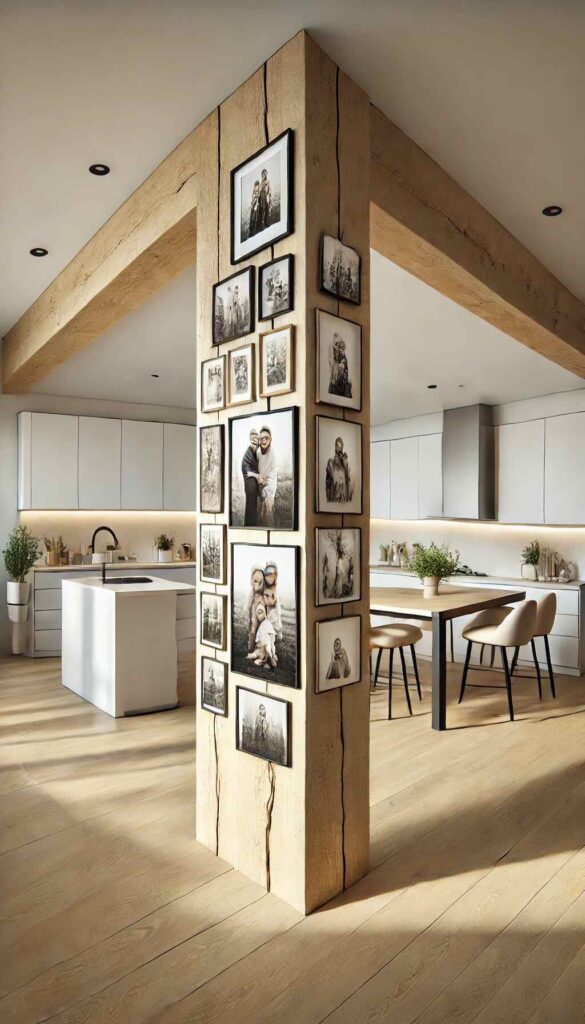
It’s exactly what it sounds like—turning your beams into a gallery wall!
You can use them to showcase art, photographs, or even small decorative objects. It’s functional, beautiful, and a great way to personalize your space.
When I turned a vertical beam in my dining room into a gallery feature, it brought so much personality to the space. Instead of the beam just being “there,” it now tells a story.
Every piece I hung up—family photos, mini artwork, and even small vintage mirrors—added warmth and character. And the best part? It got so many compliments!
9. Light-Up Beam
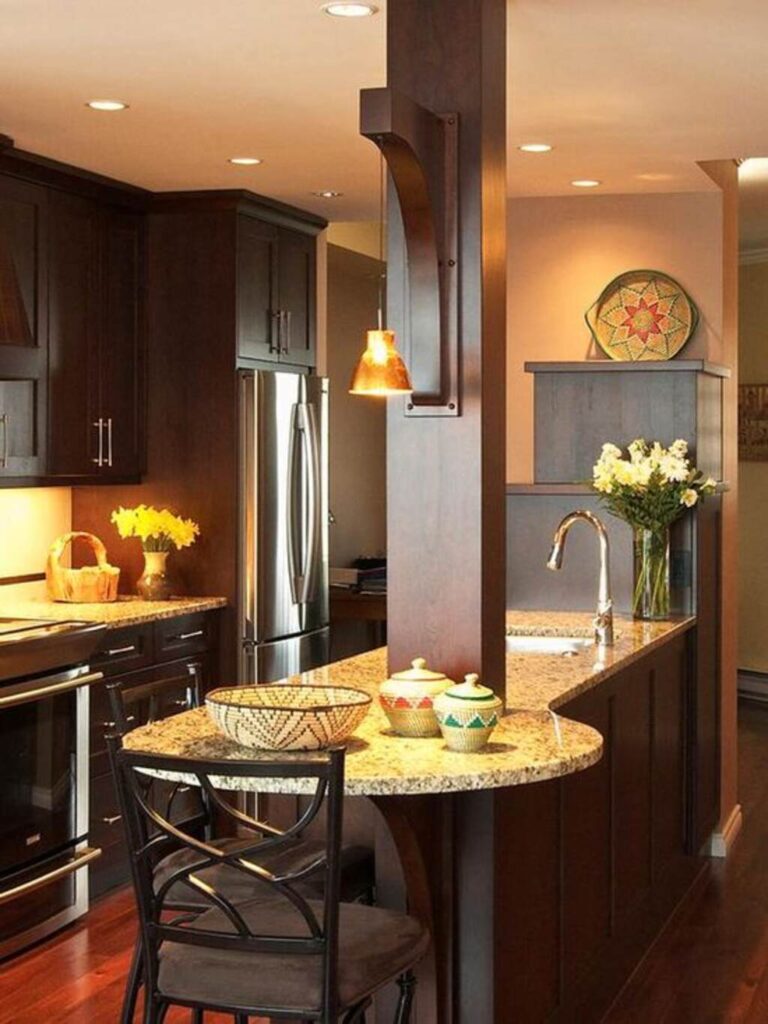
Adding light to a beam is one of those design choices that transforms an ordinary structural feature into a striking design statement.
I’ve tried this in my home, and let me tell you—it’s a game-changer! Not only does it highlight the beauty of the beam itself, but it also creates a cozy and inviting ambiance in the space.
If you’ve got an exposed beam that feels underwhelming, lighting could be the perfect way to elevate it.
And if you’ve got high ceilings or vaulted spaces, emphasizing the beams with lighting draws the eye upward, making the beam feel even more expansive.
10. Beam Pillar As Chimney
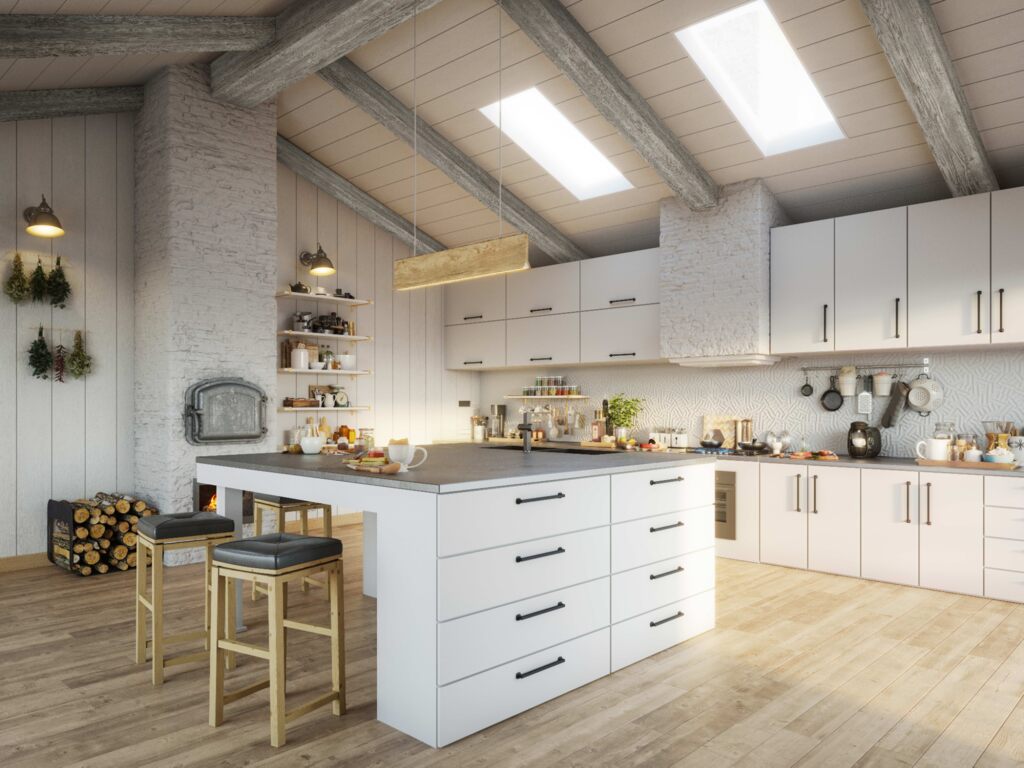
A chimney can serve as a load-bearing structure if it’s designed to support the weight of the building components above it, such as floors, walls, or roof trusses.
The masonry or reinforced concrete construction of a chimney often provides the strength needed to handle vertical loads.
This dual-purpose approach can save space and materials, making it ideal for compact designs or unique architectural features.
The chimney must be designed to handle both its primary purpose (venting smoke) and the added weight from floors or walls above.
This often involves reinforced materials, such as steel-reinforced concrete or specialized masonry.
Conclusion
Load-bearing beams don’t have to be just structural elements—they can become stunning design features that enhance the character and ambiance of any space.
By blending utility with flair, you can transform an otherwise overlooked feature into a beautiful, eye-catching element of your home. So, don’t shy away from making your load-bearing beams a key part of your design.
With the right approach, they can help define the mood and personality of your space, adding a unique touch that is both practical and visually captivating. Happy decorating!
FAQs
Can I install load-bearing beams as part of a DIY project?
While it’s possible to install load-bearing beams on your own, it’s highly recommended to consult with a structural engineer or contractor. Load-bearing beams are critical to your home’s structural integrity, so any modifications should be done carefully and professionally to ensure safety.
Are faux beams a good choice for a small kitchen?
Faux beams are an excellent choice for small kitchens because they provide the aesthetic appeal of real wood or other materials without the added weight or expense. They allow you to achieve a stylish look while keeping the space feeling open and airy. Faux beams also make a great option for homeowners looking to save on renovation costs.
What’s the best way to clean and maintain load-bearing beams?
The maintenance of your load-bearing beams depends on the material you choose. Wooden beams should be sealed for moisture resistance, especially in kitchens. Faux beams only require occasional dusting or a wipe-down with a damp cloth. Steel beams may need periodic cleaning to avoid rust, and painted beams can be touched up with a coat of paint when necessary.
Can load-bearing beams be hidden in the ceiling?
Yes, load-bearing beams can be concealed within the ceiling. This is often done by creating a false ceiling or using drywall to cover the beams. This option is ideal for those who want to maintain a sleek, unobstructed ceiling but still require the strength and support that load-bearing beams provide.
Are there any design options that make load-bearing beams less noticeable?
Yes! If you want to downplay the appearance of load-bearing beams, consider using colors that blend with your ceiling or walls, like soft whites, neutrals, or pastels. You can also install faux beams that look like wood but are less intrusive, or incorporate lighting features that highlight other design elements of the room.
How can load-bearing beams help with soundproofing in a kitchen?
Load-bearing beams, especially when made from materials like wood, can help dampen sound and reduce noise transmission between rooms. They can be an excellent addition if you’re looking for a quieter kitchen space, as the natural material can absorb sound more effectively than drywall or metal beams.

